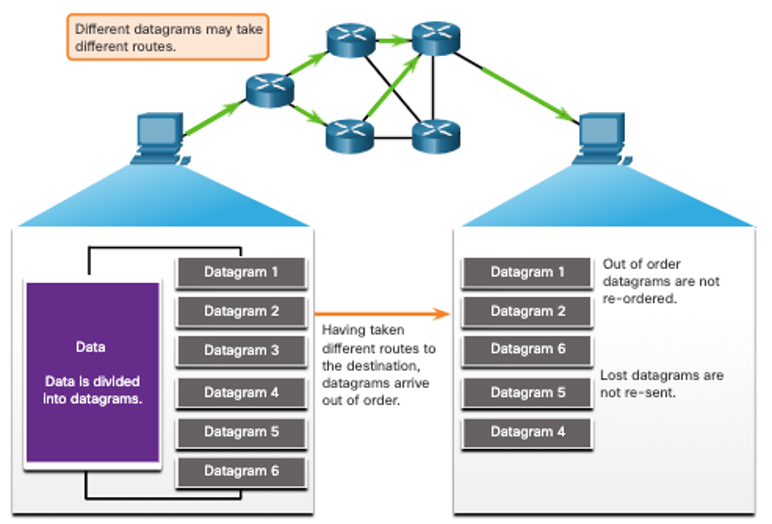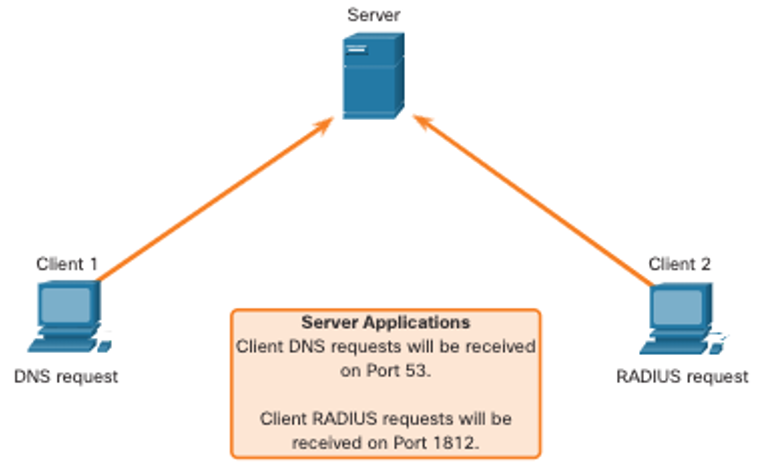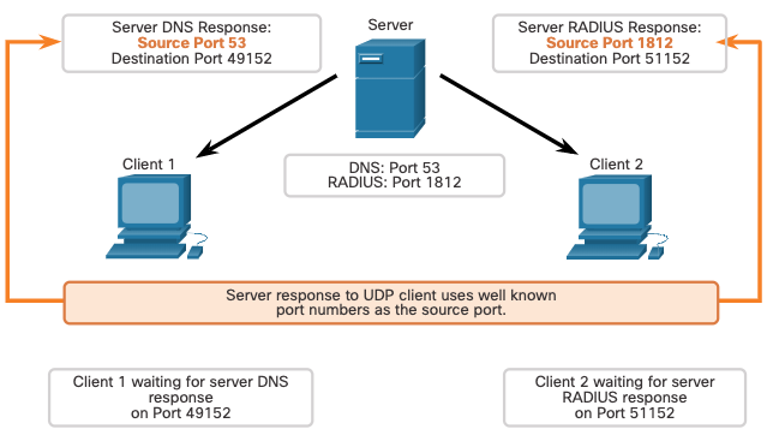
About Lesson
UDP Communication
Compare the operations of transport layer protocols in supporting end-to-end communication.
UDP Low Overhead versus Reliability
- UDP does not establish a connection. UDP provides low overhead data transport because it has a small datagram header and no network management traffic.

UDP Datagram Reassembly
- UDP does not track sequence numbers the way TCP does.
- UDP has no way to reorder the datagrams into their transmission order.
- UDP simply reassembles the data in the order that it was received and forwards it to the application.

UDP Server Processes and Requests
- UDP-based server applications are assigned well-known or registered port numbers. UDP receives a datagram destined for one of these ports, it forwards the application data to the appropriate application based on its port number.

UDP Client Processes
- The UDP client process dynamically selects a port number from the range of port numbers and uses this as the source port for the conversation.
- The destination port is usually the well-known or registered port number assigned to the server process.
- After a client has selected the source and destination ports, the same pair of ports are used in the header of all datagrams in the transaction.

Other related topics
| Topic Title | Topic Objective |
|---|---|
| Transportation of Data | Explain the purpose of the transport layer in managing the transportation of data in end-to-end communication. |
| TCP Overview | Explain characteristics of TCP. |
| UDP Overview | Explain characteristics of UDP. |
| Port Numbers | Explain how TCP and UDP use port numbers. |
| TCP Communication Process | Explain how TCP session establishment and termination processes facilitate reliable communication. |
| Reliability and Flow Control | Explain how TCP protocol data units are transmitted and acknowledged to guarantee delivery. |
| UDP Communication | Compare the operations of transport layer protocols in supporting end-to-end communication. |
Other useful information
Join the conversation